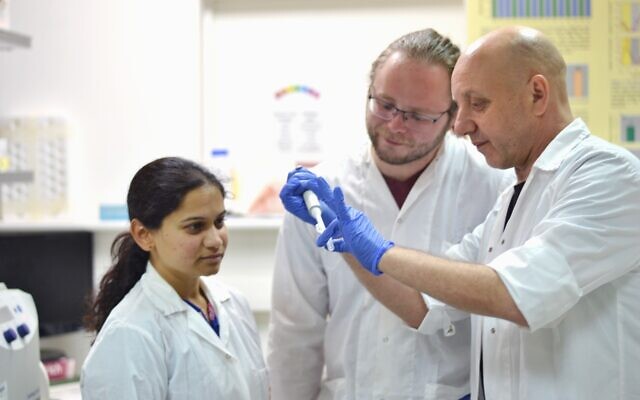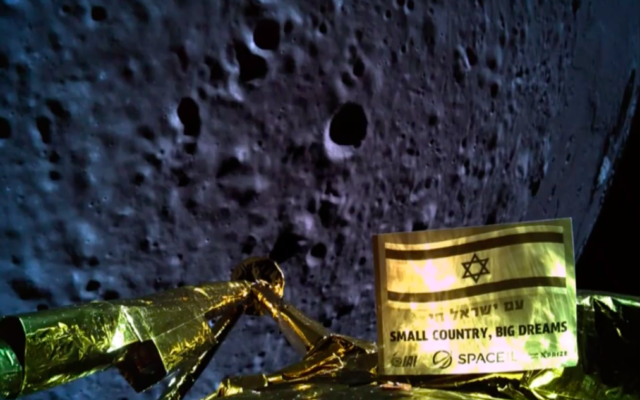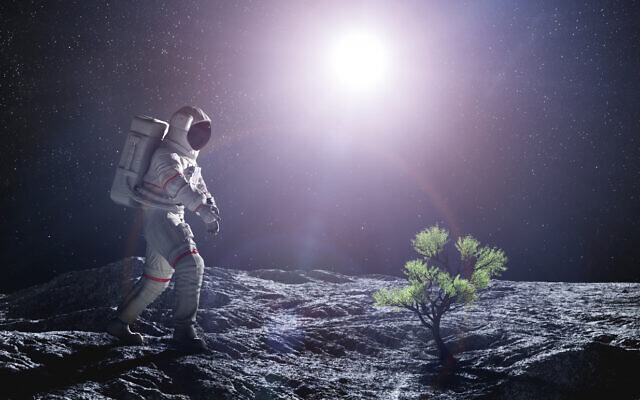Israel Aims to Grow Plants on the Moon
Hoping to pave way for self-sustaining lunar bases, institute that helps turn Negev and other arid areas fertile preparing to blast mini-greenhouse of seeds and plants into space.
Israeli scientists are planning to try growing a range of seeds into plants on the moon, in the most ambitious attempt yet at extraplanetary agriculture.
The project is the next frontier for a research institute located in the Negev Desert in Israel’s south, a region famously inhospitable to agriculture but which has nevertheless been made to bloom in populated areas.
The Jacob Blaustein Institute for Desert Research at Beersheba’s Ben Gurion University investigates how to grow food in such arid regions on Earth — and is now making its first foray into space.
Astronauts on the International Space Station grow plants, but agriculture elsewhere in space has so far been limited to a Chinese cotton seed that sprouted on the moon in 2019.
Ben Gurion researchers are working with universities in Australia and South Africa to prepare a tiny 2-kilogram greenhouse with a range of seeds and plants that will head to the moon in 2025. It will travel aboard Beresheet 2, the second attempt at an unmanned moon landing by the Israeli SpaceIL nonprofit.
The first Beresheet spacecraft crashed into the moon’s surface in April 2019 during its attempt to land on Earth’s satellite, dashing the hopes of hundreds of engineers who had worked on the project for years.
The mini-greenhouse that is being prepared for Beresheet 2 will be sealed, retaining the Earth’s atmosphere, but will be subject to the moon’s microgravity, which does not exist on the International Space Station.

“Bases on the moon or colonies on Mars could become a reality, and we’re exploring whether we know how to grow plants there,” Prof. Simon Barak of the Blaustein Institute told The Times of Israel, adding that his approach of sealed chambers dispatched from Earth would be a likely solution.
“Plants would be important for food, for oxygen, for medication, for removing CO₂ from the air, and also for general wellbeing, as it’s known that having plants around you promotes wellbeing.”
The chamber he is preparing, along with colleagues Prof. Aaron Fait and Dr. Tarin Paz-Kagan and international collaborators, will automatically water, heat and photograph the seeds and plants, and contain enough atmospheric gases for the duration of the experiment.
It will automatically spring into action once Beresheet 2 lands, but will only have battery life for 72 hours, so it will include fast-growing species from the family known as resurrection plants, and will wrap up the experiments quickly. Another challenge is its robustness. “It will need to survive a four-and-a-half month journey to the moon, with temperature extremes,” said Barak.

He said that the project will have a strong citizen science component, with people across Israel and outside it, including high school students, urged to grow the same seeds and plants as those dispatched to the moon. These will constitute control experiments, for comparison with those on the moon.
Barak thinks the experiment could potentially be important in the discussion about humanity expanding beyond Earth.
“People ask me why we spend money on space if we’ve got problems that need addressing here on Earth,” he remarked. “I reply that Earth is finite, its resources are finite, and if we care about the future, we may need the means to leave the planet and reach for the stars.”




comments